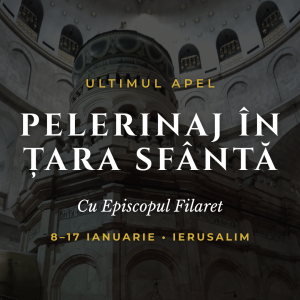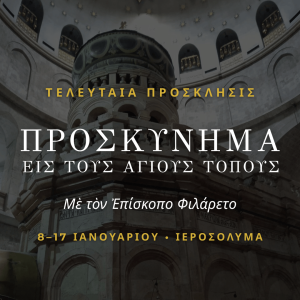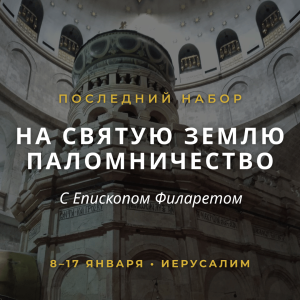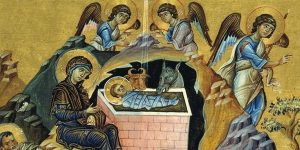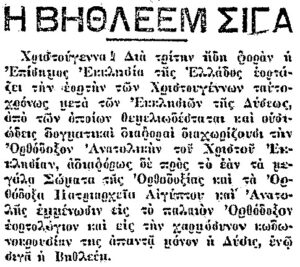TWO KINDS OF HOPE by Vladimir Moss
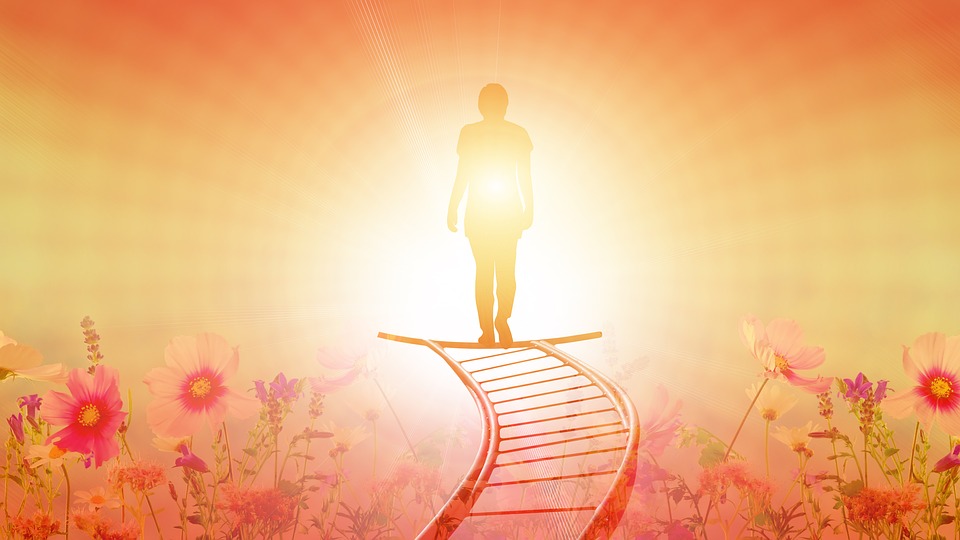
TWO KINDS OF HOPE
Written by Vladimir Moss
TWO KINDS OF HOPE

This year, 2016/17, the feast of the Holy Ancestors of Christ, the Sunday before Nativity, coincides with New Year’s Day in the West. This coincidence gives food for thought about a quality that both feasts, both the holy and the secular, express. That quality is hope, the second of the holy trinity of virtues, faith, hope and love, and the one that is spoken and written about least.
Just as there is true faith and false faith, and true love and false love, so there is true hope and false hope. True hope is based on reality: false hope defies reality. The hope of the Ancestors of Christ was based on the promise of the Messiah, the Redeemer of the world. Being based on reality, on the promises of the Truth Himself, it was duly fulfilled in the birth of the Redeemer on Christmas Day, which brings ineffable joy not only to the Ancestors of Christ but also to all those that believe in Him and honour them. The first of those ancestors, who comes at the head of the genealogy in today’s Gospel from Matthew, is Abraham, of whom the Lord said: “Your father Abraham rejoiced to see My Day, and he saw it and was glad” (John 8.56). That is, he was filled with hope; and since that hope was true, and was based on the reality of God’s promise, he rejoiced with a true and boundless joy even before it was fulfilled.
The hope of the New Year revelers, however, is a vain hope, being based on a lie. That lie is the idea that this new year will be better than the old one, that it will bring joy where the last year brought woe. Is there any reason to believe that? None at all. We don’t have to have the gift of prophecy to see that the world is hurtling down a path that leads to unprecedented global disaster and that none of the wise men of this world have any idea how to avert it.
But let us suppose that my doomsaying is wrong and that 2017 turns out to be fractionally better in some respects than 2016. Is that really a cause for joy? Is that really the fulfillment of hope?
In no way, because every new year, every new day, brings us closer to the old enemy that is ever new – death. As that grim realist, Macbeth said:
Tomorrow, and tomorrow, and tomorrow,
Creeps in this petty pace from day to day
To the last syllable of recorded time,
And all our yesterdays have lighted fools
The way to dusty death.
So what is the use of celebrating another tomorrow, which may or may not bring some minor alleviation in our present woe, but only brings us closer to dusty death?
Our civilization is characterized by its faith in “dusty death”. Our wise men believe that we all came out of a tiny mass of superheated dust some 14 billion years ago and that we are all destined to return to that dust – which by that time will have cooled down to some infinitesimally low temperature. For them, there is no God, no immortal soul, no hope, only dust – which came, God only knows where from.
But it is contrary to human nature that is formed in God’s image to live without hope. And so modern man supplements his hopeless faith in dust and death by living it up for one fleeting moment in the year. Midnight strikes, the corks pop, and the champagne fizzes. “Eat, drink and merry, for tomorrow we die!” Let us hope against hope! Our faith tells us that there is no hope. But let us hope nevertheless, for without hope we will die!
It is strange that midnight should be the hour of rejoicing. It is at midnight that the thief comes, catching the foolish sleeping in their beds. “The Bridegroom comes in the middle of the night…” But today’s revelers have lost all lost all knowledge of Christian symbolism, and all fear of the reality behind the symbols. Just as their vain hope contradicts their false faith, so they choose to cast off all inhibitions at just the moment when the Church tells us to watch and pray…
There is a Christian couple whose feast we celebrate today – the Holy Martyr Boniface and Righteous Aglais of Rome. She was rich (he was one of her slaves), and they lived in sin. But they also believed in Christ, and one day Aglais ordered Boniface to go to the East, where Christians were being martyred for the faith, and buy some bodies of the martyrs and bring them back to Rome for her to venerate. As Boniface was preparing to set out on his journey, he said to his mistress: “My lady, what if I cannot find a martyr such as you desire? What if my companies return to you my body after it has been tortured for Christ?” He was speaking in jest, but God listened to his words with seriousness and decided to bring them to pass. Boniface went to the East, was tortured and martyred for the faith, and his body was brought back to his mistress as holy relics. She built a chapel over his body and reformed her life. “Her remains,” writes St. Demetrius of Rostov, “were laid to rest beside those of the holy martyr Boniface, and thus the saints were united forever. Having undergone a wondrous transformation of life, they were both granted a blessed repose: the sins of one were washed away with his blood; the other was cleansed of defilement by her tears and asceticism.”[1
It is surely no coincidence that the Church chants hymns to these saints on the very day that countless revelers are returning from their New Year celebrations, having defiled their souls and bodies with drunkenness and lust. There is hope even for the hopeless, the believers in dust. And even those who party when midnight strikes can return to God before the Midnight of the whole world descends, through the prayers of Saints Boniface and Aglais!
But for that, they must cast off their false faith and hope and acquire the true faith and hope of the Ancestors of Christ. Many hundreds of years before the Coming of Christ Abraham believed in Him, hoped in Him and rejoiced in spirit. There was nothing around him to confirm that hope; the whole world was sunk in paganism; he had only the word of God to sustain him. Nor did any of the later Ancestors of Christ have anything outside them to fill them with hope. As the great day prophesied by the Prophets of God drew closer, the world grew still more frenzied in debauchery and faithlessness. Even the people of Israel, God’s chosen people, were losing faith in their calling and hope in their coming Messiah. Only a tiny remnant of true believers was left. But the night is darkest just before the dawn. And it was at that point that the Sun of righteousness, the Dayspring from on high, arose in the heart of the humble Virgin, the daughter of Abraham, the father of the faithful.
We are in a not dissimilar situation today. As they waited for the First Coming of Christ, so we wait for the Second while the flock of the True People of God grows ever smaller. And around us, too, is thick darkness of unbelief and hopelessness. But there is a major difference between us and the Old Testament righteous. While they had only the word of God to sustain them, we have both the word of God and the sight of their immense patience, their endurance to the end – not to mention two thousand years of Christian sanctity.
So let us honour all the Ancestors of Christ who created that life-giving chain that linked mankind spiritually and bodily to the Incarnate God, who refused to lose faith and hope in Him when all those around them were in the darkness of false faith and hope. Although we live in a similar age of hopelessness, their podvig is far greater than ours, for we have seen the fulfillment of their hope. For we have seen that Christ is born, and together with them we cry out: “Glorify Him!”
December 19 / January 1 2016/17.
Holy Martyr Boniface and Righteous Aglais.
[1] St. Demetrius, The Great Collection of the Lives of the Saints, volume IV: December, p. 363

